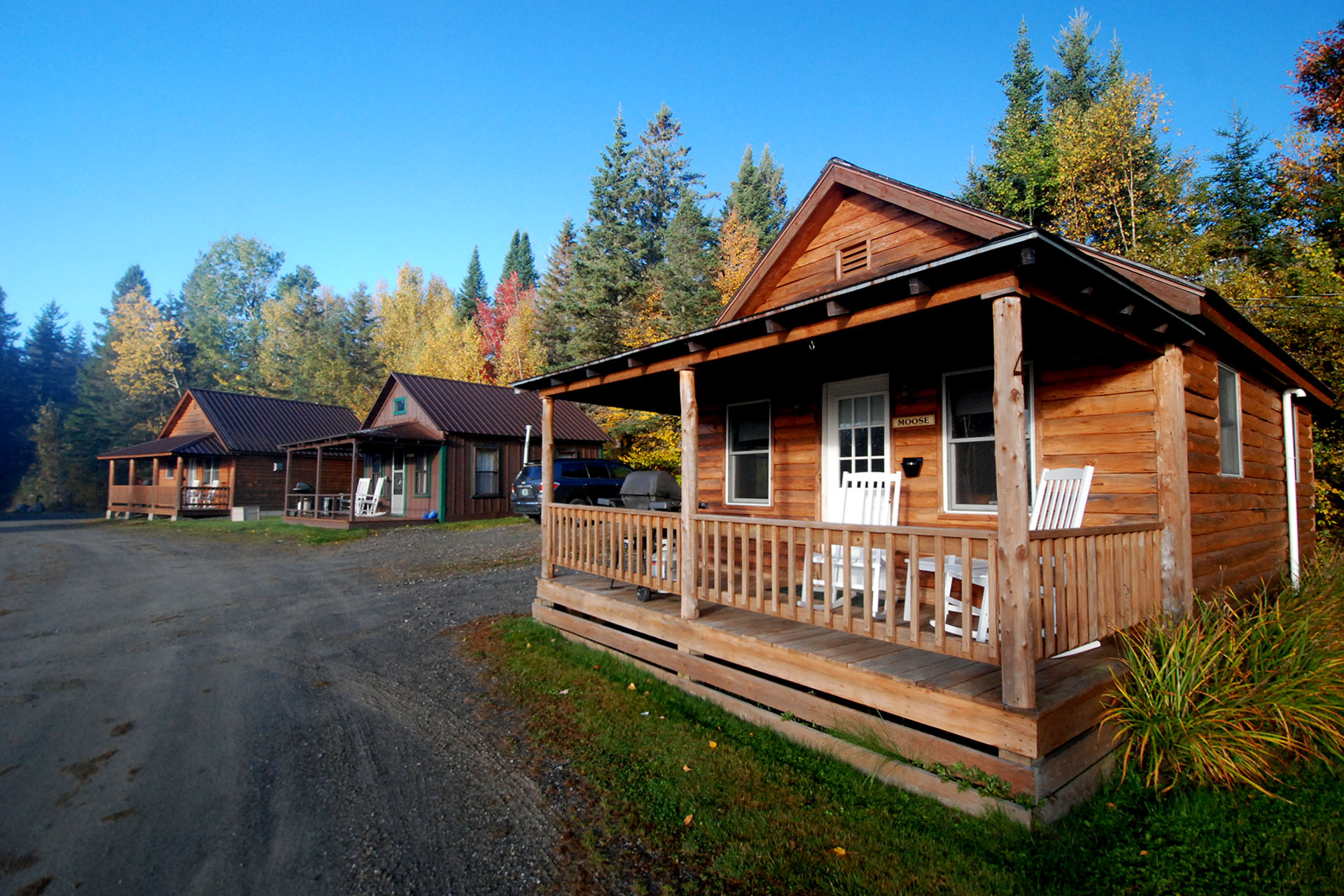


Although I do most of my fishing in saltwater these days, I’ve recently found myself returning to the sweet water destinations of my youth. One of these is the town of Pittsburg in the northernmost corner of New Hampshire.
Pittsburg has the distinction of being home to the headwaters of the Connecticut River, which begins just 300 yards below the Canadian border and flows for 410 miles to Long Island Sound. After feeding Fourth, Third, Second, and First Connecticut Lakes, it becomes a fly fisherman’s paradise, as it contains swift, cold water that supports robust populations of trout (brook, brown, and rainbow) and landlocked salmon.
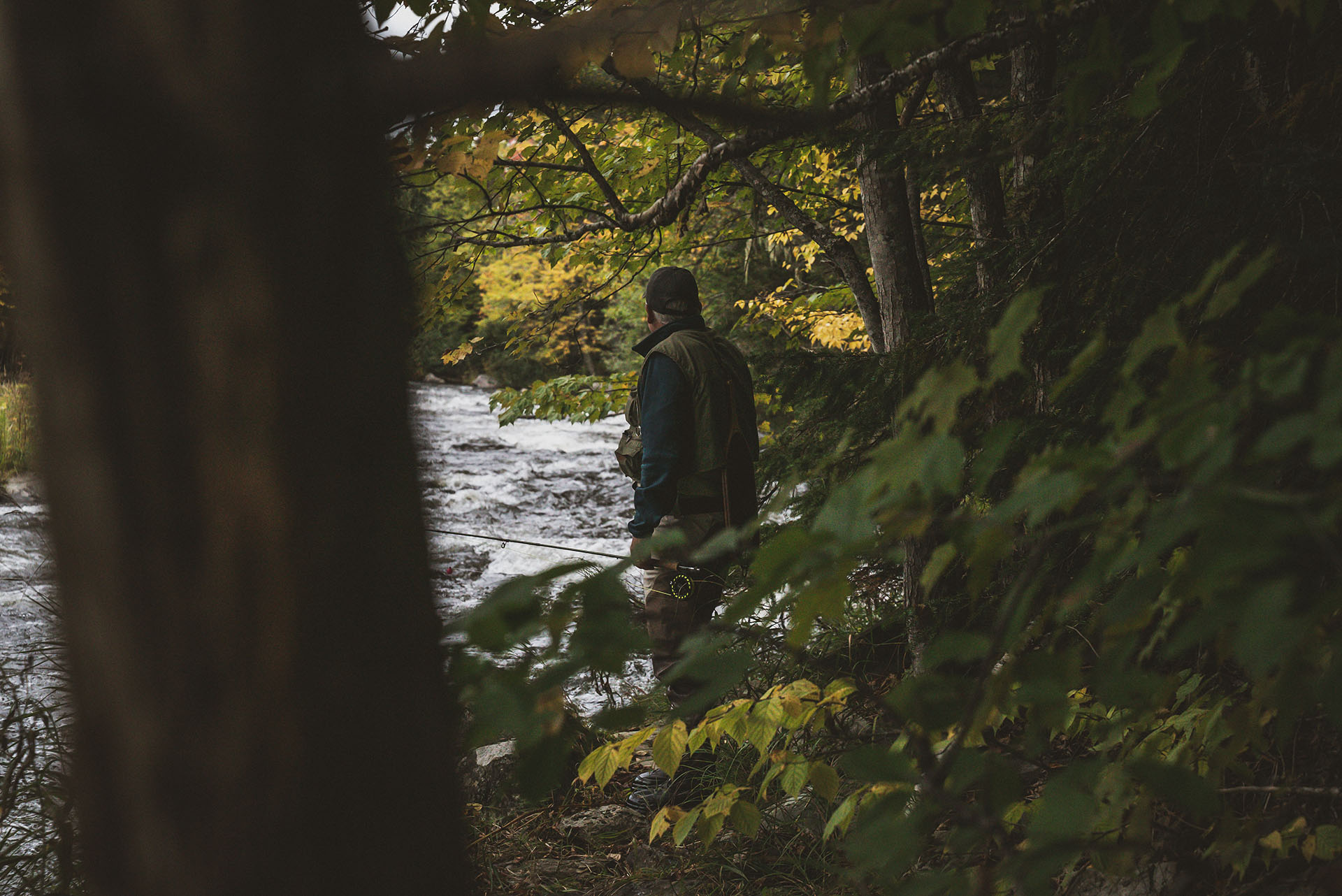
The 2 ½ miles from First Connecticut Lake to manmade Lake Francis is known as the “Trophy Stretch.” The tailwater dam at the base of First Connecticut delivers cold water to this section, supporting good fishing all season. The spring and fall can be especially productive, highlighted by runs of big salmon and trophy browns that push upriver from Lake Francis.
Dry-fly enthusiasts will find much to love about the river in in June and July, as these months see a lot of insect activity. Guide Bill Bernhardt of Pittsburg-based Lopstick Outfitters says that when searching for fish with a dry fly, try to achieve a slow, drag-free drift. If your fly is drifting slowly and naturally, the fish should at least rise to give it a look. If this continues without the fish committing to a strike, change flies. “Be ready to change your fly on the fly,” advises Bernhardt. “The fish will tell you what to do; you just have to pay attention.”
Some proven dries for the Upper Connecticut include the Elk Hair Caddis, Pale Morning Dun, Olive Soft Hackle and Sulphur Comparadun.
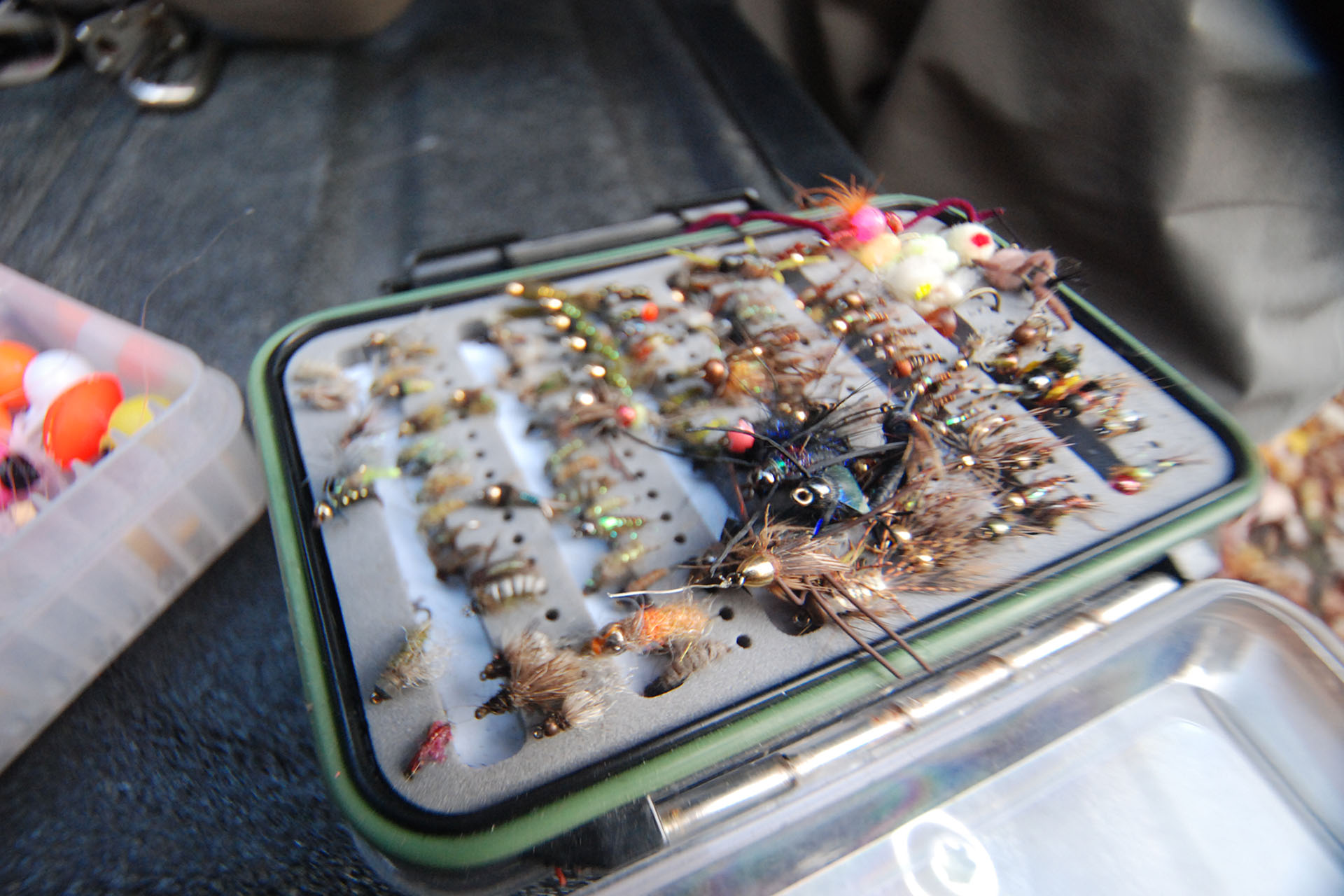
While watching a fish inhale a dry fly is thrilling, Bernhardt reminds his clients that two-thirds of the fish’s food is consumed below the surface, which is why nymphing is so effective.
To get a clue as to what is on the menu, and what size nymph fly to use, simply look at the underside of a river rock. Popular patterns for the upper river include the Flash-Bang, Hairs Ear, Beadhead Pheasant Tail, Hatching Pupae Olive, Gummy Worm, Elk Hair Caddis and CDC Emerger Slate Olive. At times, large stonefly patterns such as the Golden Stone will also take fish.
The hard part is getting your fly down to the level of the feeding fish, which is normally just a few inches above the river bottom. Getting deep can be accomplished by means of a heavily weighted stonefly pattern or a small split-shot or two pinched onto the leader about 15 inches above the fly. A drag-free drift is often critical to success, so it pays to learn the techniques of high-sticking and mending. Your fly should never float faster or slower than the current. Plastic or foam strike indicators will help keep the fly at the right depth, and a light tippet (4X or 5X) is often necessary.
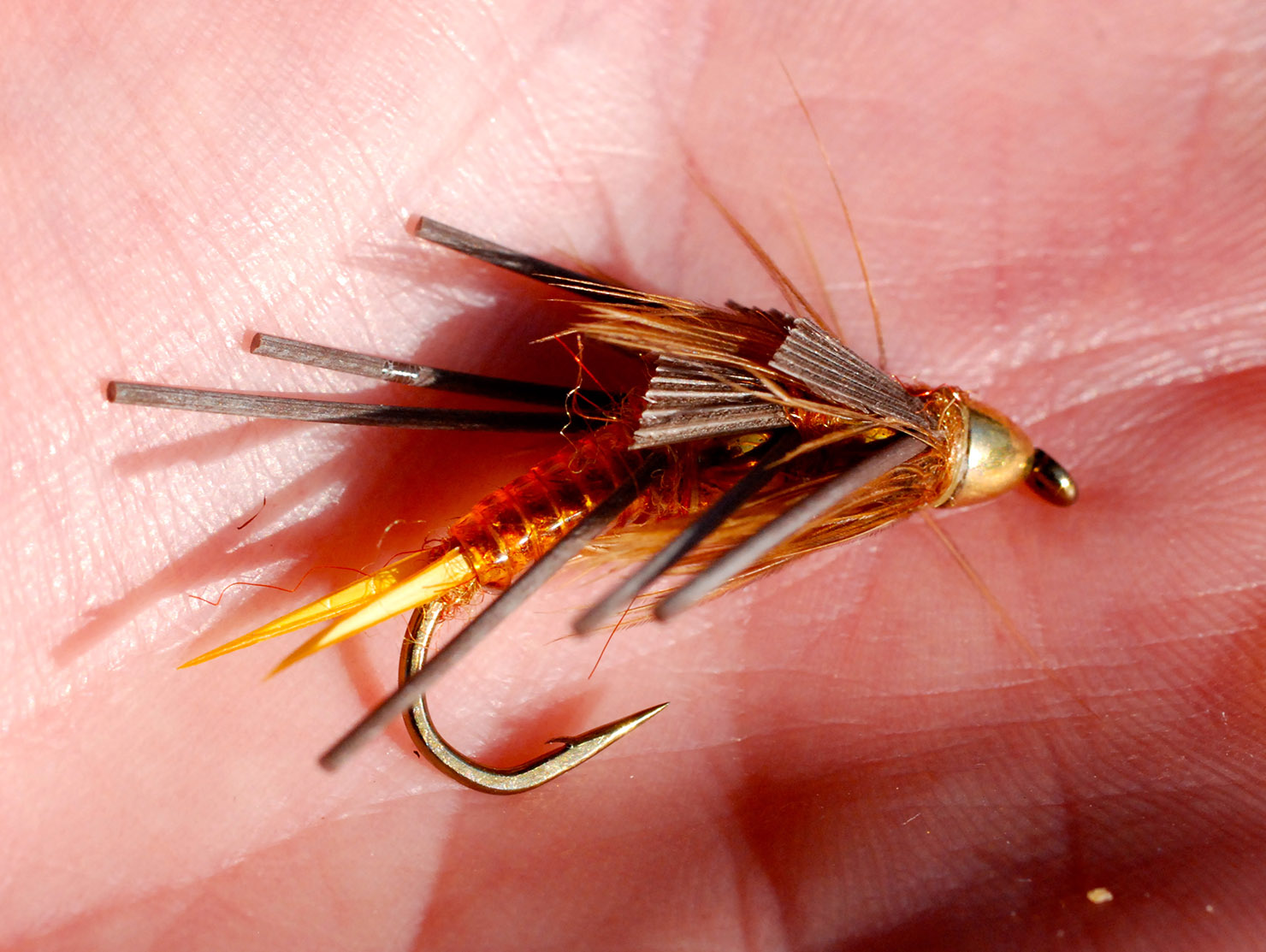
Of course, big trout and salmon do not get that way by relying on a diet of small mayflies and nymphs, which is why streamer flies can be so effective if larger fish are the target. Streamers also let you to cover a lot of water in a short amount of time, which helps in locating fish. A big fish will often attack a streamer just to chase it out of its territory, thereby revealing its presence. Some local favorites include the Grey Ghost, Grey Soft-Hackle, and Royal Coachman. Cast the streamer across-current or slightly down current, and work it back with short strips.
Spey casting streamers can be very effective on the upper river, where the densely wooded banks limit one’s backcasts. Greg Inglis, another Lopstick Outfitters guide, employs this technique just below the dam at Fourth Connecticut Lake using a 10-foot Orvis Spey rod. The long rod allows him to make two-handed roll casts in spots where backcasts are impossible.
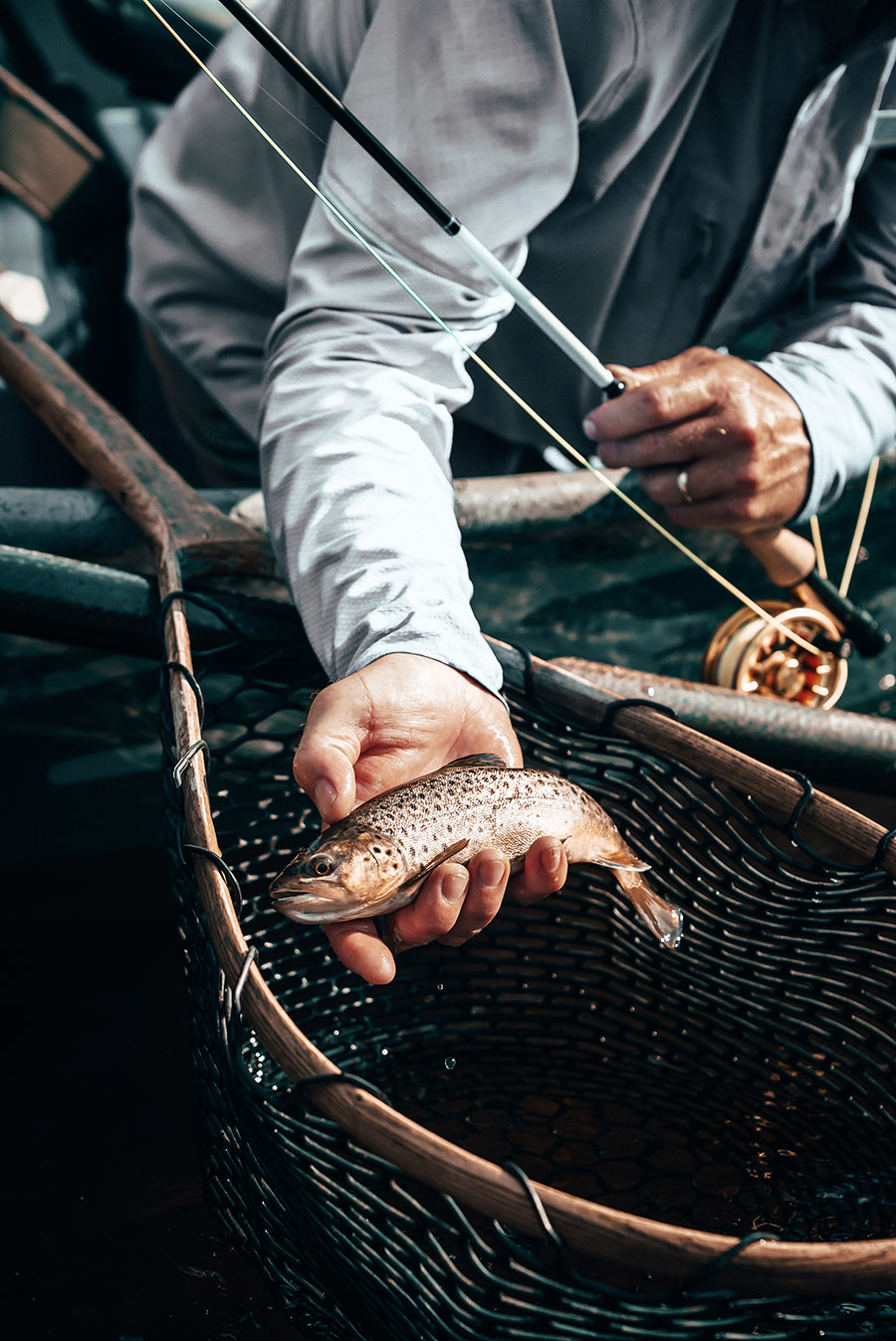
There are several inn, lodges, B&B’s and campgrounds that make great base camps for fishing the Upper Connecticut. One of the best and oldest is the Cabins at Lopstick. An Orvis-endorsed outfitter employing top fishing and hunting guides in the region, The Cabins at Lopstick comprise a network of both owned and managed housekeeping units scattered throughout the area.
Each cabin, some pet-friendly, has a fully equipped kitchen, private bedrooms, satellite television, outdoor grill and a private porch, some with spectacular views of the water. Fishing tackle, flies and apparel are sold at the main office, but the coffee and friendly advice are free.
For more information, visit lopstick.com or call (603) 538-6659.
